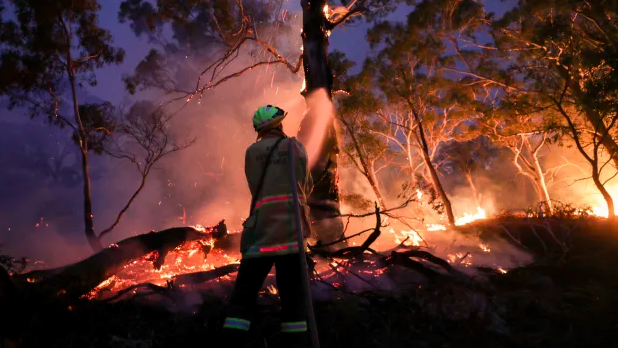Alex Druce
(Australian Associated Press)
Reserve Bank governor Philip Lowe expects the summer’s bushfire crisis to singe December and March quarter GDP figures, but says the disaster will have little impact on the 2020 growth outlook as government grants and insurance payouts will assist with the rebuild.
Dr Lowe predicts a 0.2 per cent fire hit to GDP over the previous and current quarters as Australia comes to grips with the widespread destruction of homes, farms, businesses and public infrastructure since November.
But on Wednesday he added to recent optimism the economy had reached a gentle turning point, anticipating a “material rebuild” will leave the 2.75 per cent growth outlook to December 2020 “largely unaffected”.
“In assessing the impact of this on the Australian economy as a whole we have taken into account that there will be a material rebuilding effort and that government grants and insurance payments will assist many people,” Dr Lowe told the National Press Club in Sydney.
In his first speech of the year, Dr Lowe also jumped to the defence of the central bank’s rate strategy in 2019, declaring the three 0.25 percentage point reductions since June as effective in helping households adjust their balance sheets.
Dr Lowe said while the case remained for further rate cuts in 2020, he warned of the inflationary effect on the housing bubble.
“Lower interest rates could also encourage more borrowing by households eager to buy residential property at a time when there is already a strong upswing in housing prices in place,” he said.
The RBA shocked economists on Tuesday when it left its growth outlook for the year unchanged, despite concerns over the economic pain in wait following a torrid summer of fires and, more recently, a coronavirus outbreak.
Economists remarked the central bank had “surprisingly” little to say about the headwinds presented in recent months after it held cash rate at a record low 0.75 per cent and suggested the economy would continue to improve over the year.
Dr Lowe cited the passing of global trade uncertainties, an expanding resources sector, an expected pickup in consumer spending, and a likely end to the downswing in residential construction as underpinning expectations of gradual improvement.
Addressing the coronavirus situation, Dr Lowe suggested it remained difficult to asses the likely impacts, though the sharp bounce back following the 2003 SARS outbreak may provide a guide.
He agreed that the virus highlighted Australia’s economic exposure to China, though he added this was not new information.
“It’s important we don’t catastrophise here,” Dr Lowe said.
Dr Lowe said on Wednesday drought would hurt growth by about 0.25 per cent through the year – more than the estimated hit from the fires – but he maintained employment and inflation would continue to improve as consumption improves.
He also mounted a defence of the RBA’s three rate cuts in 2019, rejecting the idea that monetary easing had put the brakes on consumption.
“While the Reserve Bank’s decisions reminded people of what is going on, Australians were already adjusting their spending to the reality of a combination of subdued wages growth, the fall in housing prices and high debt levels,” Dr Lowe said.
“My judgement is that if the Reserve Bank had not eased monetary policy last year, (the) adjustment by households would have been harder.”
The Australia dollar edged up to a six-day high of 67.45 US cents upon the release of Dr Lowe’s speech, having slipped to a more than decade low 66.83 US cents on January 31.

